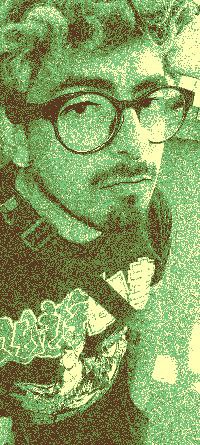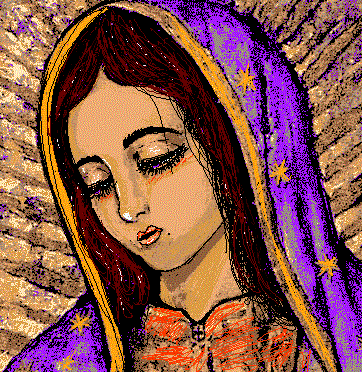I. Images exist to be shared.
II. Let's stop thinking of images as visual. Images are sensory (auditory, tactile, visual, etc).
III. Artistic work cannot be based solely on dissemination or execution, but on interpreting what position and what privileges one possesses.
IV. The fact that images seem to complicate their interpretation is due to processes of segregation.
V. Hence, art functions like a virus, infecting the core with attractive properties/object of desire: images are more effective the more they pertain to another individual.
VI. Art, to be art, must understand its medium, it must escape interpretation and distribution by the artist and become popularized.
VII. Like the old Chinese story of the tree falling in the forest, if art is not understood as art, it is not art, and vice versa.
VIII. Art de facto must be understood as non-original.
IX. The critical position towards images must question the "great ideas," the models that benefit cultural capitals that use images as a way to permeate their power into culture, perpetuating the state of mental stagnation that brings the comfort of what has already been experienced.
X. Human thought is contradictory, and its greatest contradiction is based on its greatest virtue and at the same time its greatest vice: science.
XI. We live in a world biologically rationalized by what one understands by God through natural selection, being products of evolution.
XII. It is absurd to think of ourselves as a species isolated from the animal kingdom and the biological/mineral/water macro system. Every image arises as a way to represent the needs of our animality, of our desire as a species for reproduction/survival.
XIII. Images are containers of faith.
XIV. The images that science in its factual limitation cannot rationalize, faith fills that void.
XV. Faith in the power of images to change the dynamics that divide us as a species, no matter what they are.
XVI. Apology for media archaeology, for unlooked-for discovery, for flexibility, for contradicting opinions, for dynamiting discussions, for not isolating from the phenomenon, for never believing that there are more certain opinions than others.
XVII. Doubt everything. Raise an eyebrow at the "untouchable," move figures that are comfortably on their throne and believe it is their right instead of their privilege.
XVIII. Be humble, as Kendrick Lamar says.
XIX. Images, with their power, give those who produce them the responsibility to activate them: to push experimentation to the limit.
XX. There is no untouchable figure; the more power the image has, the more weight the bolide has to the execution of the artwork.
XXI. Any idea that starts from participating in a safe space should be discarded: images should always probe uncertain and mysterious paths. A constant laboratory for experimentation.
XXII. Art must leave the white cube, as this concept finds its transcendence in the virtual white cube, like the cube and the hypercube, like a layer 2 in the blockchain, opening the space of the white cube to digital-analog-transmedia.
XXIII. Freedom to the definitions of art, whatever we understand by art is completely valid.
XXIV. Transdiscipline between individuals as a viable way for the images that concern us to be interpreted and not lost in the ether of saturation.
XXV. If images do not dialogue with contemporary society and culture, why produce images then?
XXVI. Understand the factual discrimination of the media.
XXVII. The medium itself as a trigger of the creative process.
XXVIII. No medium is completely co-opted: all media have possibilities of liberation. Those who produce images have the role of questioning the dynamics of the medium itself.
XXIX. May the communities we build liberate and redeem us.
XXX. "Hyper-referencing images, hyper-linking people."
XRRXR, 2024



